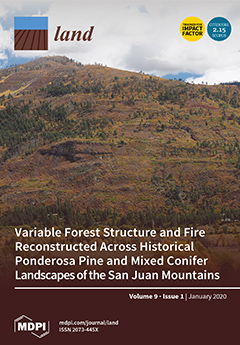Resources
Displaying 1601 - 1605 of 2258Impacts of Public and Private Sector Policies on Soybean and Pasture Expansion in Mato Grosso—Brazil from 2001 to 2017
Demand for agricultural exports in Brazil has stimulated the expansion of crop production and cattle raising, which has caused environmental impacts. In response, Brazil developed public policies such as the new Forest Code (FC) and supply chain arrangements such the Soy and the Cattle Moratoriums. This paper analyzes the effectiveness of these policies, considering the trajectories of agricultural expansion in the state of Mato Grosso in three years: 2005 (pre-moratorium and before the new FC), 2010 (post-moratorium and before the new FC) and 2017 (post-moratorium and post-new FC).
Biodiversity Impacts of Increased Ethanol Production in Brazil
Growing domestic and international ethanol demand is expected to result in increased sugarcane cultivation in Brazil. Sugarcane expansion currently results in land-use changes mainly in the Cerrado and Atlantic Forest biomes, two severely threatened biodiversity hotspots. This study quantifies potential biodiversity impacts of increased ethanol demand in Brazil in a spatially explicit manner. We project changes in potential total, threatened, endemic, and range-restricted mammals’ species richness up to 2030.
Not Simply Green: Nature-Based Solutions as a Concept and Practical Approach for Sustainability Studies and Planning Agendas in Cities
The concept of a nature-based solution (NBS) has been developed in order to operationalize an ecosystem services approach within spatial planning policies and practices, to fully integrate the ecological dimension, and, at the same time, to address current societal challenges in cities. It exceeds the bounds of traditional approaches that aim ‘to protect and preserve’ by considering enhancing, restoring, co-creating, and co-designing urban green networks with nature that are characterized by multifunctionality and connectivity.
Pastoral Stone Enclosures as Biological Cultural Heritage: Galician and Cornish Examples of Community Conservation
The role and importance of a built structure are closely related to the surrounding area, with interest in a given area having a concomitant effect on the relevance given to the constructions it may hold. Heritage interest in landscape areas has grown in recent times leading to a sound valorisation process. This connects with the recent concept of biological cultural heritage (BCH), or biocultural heritage (definition still in process), that can be understood as domesticated landscapes resulting from long-term biological and social relationships.
Characterizing the Landscape Structure of Urban Wetlands Using Terrain and Landscape Indices
Several studies have shown human impacts on urban wetlands. These impacts are mostly studied at broad scales, which may generalize and aggregate important information needed for landscape quantification or terrain analysis. This situation can weakly or inappropriately address the structure of wetland landscapes, thus affecting the assessment of the quantities and qualities of terrestrial wetland habitats.


